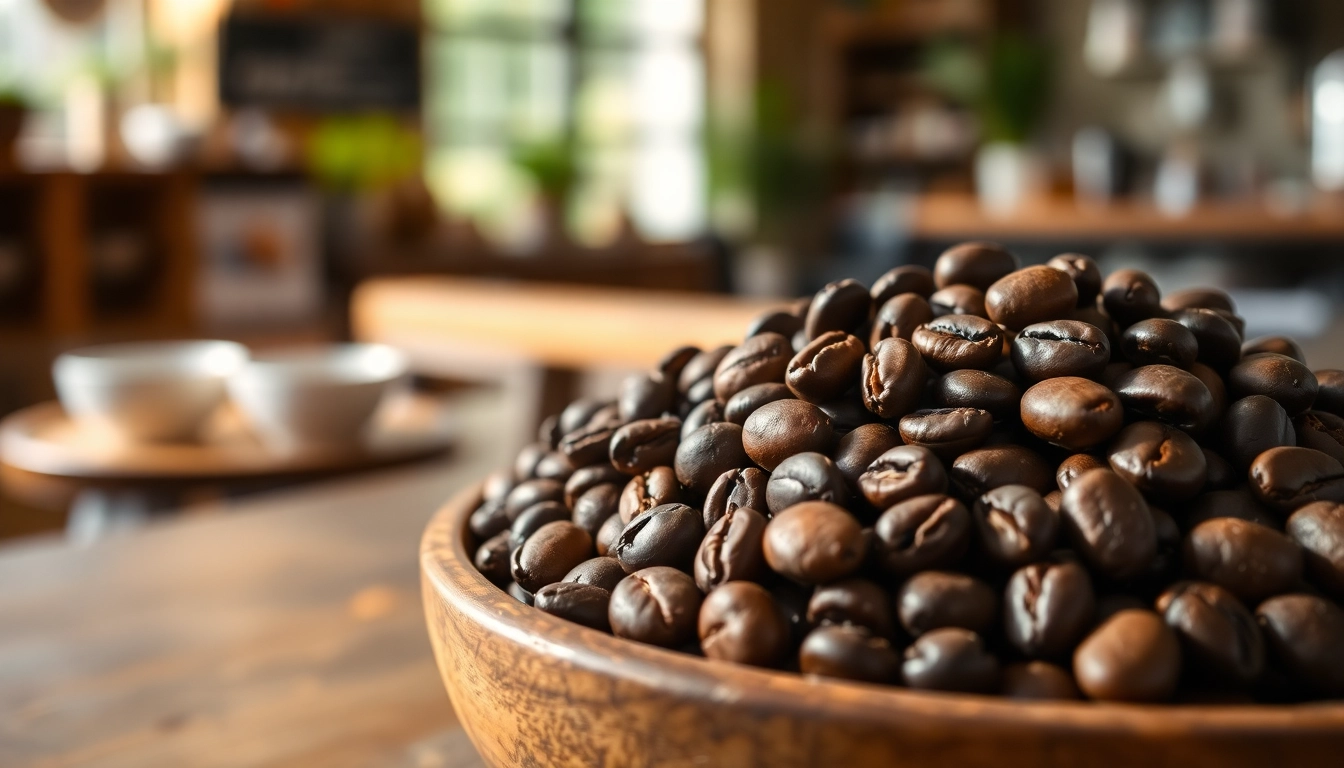Understanding Cinnamon Bark: Types and Origins
1. What is Cinnamon Bark?
Cinnamon bark is the inner bark of trees belonging to the genus Cinnamomum. It is prized for its aromatic properties and has been used for both culinary and medicinal purposes throughout history. The process of obtaining cinnamon bark involves carefully stripping away the outer bark layer to reveal the soft, inner bark, which is then dried. As it dries, the bark curls into the familiar cinnamon sticks we see in stores. Its warm, sweet flavor profile and various health benefits have made it a culinary staple in many cultures, contributing significantly to its global appeal. If you’re curious about high-quality options, consider exploring Cinnamon Bark products.
2. Varieties of Cinnamon Bark: Ceylon vs. Cassia
When discussing cinnamon bark, it’s essential to differentiate between the two main varieties: Ceylon cinnamon and Cassia cinnamon. Ceylon cinnamon, often referred to as “true cinnamon,” is primarily grown in Sri Lanka and is characterized by its light brown color and softer, thinner bark. It has a sweeter, more delicate flavor than its counterpart.
Cassia cinnamon, on the other hand, is primarily produced in China and Indonesia. It has a darker color and thicker bark with a stronger, more pungent flavor. Cassia is often less expensive and is the variety most commonly found in supermarkets. While both types offer health benefits, Ceylon cinnamon is noted for its lower levels of coumarin, a compound that can be harmful in large quantities, making it the preferred choice for those focusing on health concerns.
3. Global Cultivation and Harvesting Practices
The global demand for cinnamon has given rise to extensive cultivation practices, particularly in regions such as Southeast Asia, Latin America, and India. The process typically involves cultivating the trees in tropical climates, ensuring they receive ample sunlight and rainfall. Harvesting cinnamon bark requires skilled labor, as the process must be done with care to maintain the health of the tree and to ensure quality bark. Usually, harvesting is done once every couple of years, allowing the tree to regenerate and continue producing.
Health Benefits of Cinnamon Bark
1. Nutritional Profile and Antioxidant Properties
Cinnamon bark is not just a flavorful spice but also a powerhouse of nutrients. It is rich in antioxidants, including polyphenols, which help combat oxidative stress and inflammation in the body. Just a teaspoon of cinnamon can provide a good source of calcium, iron, and manganese, contributing significantly to daily nutritional needs.
The strong antioxidant profile of this spice has made it a subject of numerous studies exploring its role in disease prevention, particularly in conditions such as heart disease and diabetes. In ongoing research, cinnamon has been shown to reduce the effects of oxidative stress and slow the aging process in various contexts.
2. Medicinal Uses: From Digestive Health to Glycemic Control
Cinnamon bark has a long history of medicinal use across various cultures. Modern studies support many traditional claims regarding its health benefits. It is well known for its ability to aid digestion and alleviate gastrointestinal issues such as bloating and gas. Its natural antimicrobial properties make it effective in managing common digestive problems.
Furthermore, cinnamon has been linked to improved glycemic control. Studies show that it can lower blood sugar levels and increase insulin sensitivity, which is particularly beneficial for individuals with type 2 diabetes. The incorporation of cinnamon into one’s diet can be a natural method to help manage blood sugar spikes after meals, making it a valuable addition to the diets of individuals concerned about their glucose levels.
3. Potential Side Effects and Safety Precautions
While cinnamon bark brings an array of health benefits, it is essential to consume it thoughtfully. High doses of cinnamon, particularly Cassia cinnamon, can lead to undesirable effects due to its coumarin content. Coumarin may cause liver damage and other health issues when consumed in large quantities. Therefore, moderation is key, and opting for Ceylon cinnamon is advisable for those incorporating cinnamon into their daily regimen.
Individuals who are pregnant, nursing, or on specific medications should consult with healthcare professionals before adding substantial amounts of cinnamon bark to their diet, ensuring it aligns safely with their health needs.
Incorporating Cinnamon Bark in Your Diet
1. Culinary Uses: Beyond Baking and Seasoning
Cinnamon bark’s culinary versatility extends far beyond sweet baked goods. It can be used as a spice in savory dishes, enhancing the flavors of soups, stews, and curries. In Southeast Asian cuisines, cinnamon plays a critical role in marinades and sauces, adding depth and warmth to dishes. Its fragrant essence pairs beautifully with meat, vegetables, and grains, making it a staple in both traditional and modern recipes.
2. Recipes Featuring Cinnamon Bark
Adding cinnamon bark to your meals can be as simple as infusing it in beverages. For instance, you can brew a warming cup of cinnamon tea by steeping broken pieces in hot water. Here’s a quick recipe:
Cinnamon Infused Tea
- 1 stick of cinnamon bark or 1 teaspoon of cinnamon bark pieces
- 2 cups of boiling water
- Honey or lemon to taste (optional)
Combine the cinnamon bark with boiling water, let it steep for 5-10 minutes, then strain. Sweeten to taste for a soothing beverage.
In savory cooking, try integrating cinnamon into your stews. For example, adding a stick of cinnamon while simmering lentils can add a delightful warmth and complexity, enriching the overall flavor profile.
3. Choosing Quality Cinnamon Bark for Maximum Flavor
When selecting cinnamon bark, quality is paramount. Look for Ceylon cinnamon, which is generally considered superior in flavor and health benefits. Check for a fresh, potent aroma and a naturally sweet scent that indicates freshness. Be cautious of overly dark or thick sticks, which are likely Cassia cinnamon and may contain higher coumarin levels.
Cinnamon Bark in Traditional Medicine
1. Historical Uses Across Cultures
Cinnamon has been utilized in various traditional medicinal systems, dating back thousands of years. In ancient Egypt, it was prized for its preservative properties, often used in embalming practices. Ayurvedic medicine has long employed cinnamon for its digestive properties, while Traditional Chinese Medicine includes cinnamon as a warming remedy for colds and stomach ailments.
2. Modern Applications in Herbal Remedies
In contemporary herbal medicine, cinnamon continues to play a vital role. Herbalists often use cinnamon bark extracts in formulations to treat illnesses ranging from the common cold to more severe conditions like type 2 diabetes. Its ability to enhance blood circulation and boost metabolism also makes it a popular ingredient in weight loss supplements and herbal teas.
3. Research Findings on Cinnamon Bark’s Efficacy
Recent studies highlight the numerous health benefits of cinnamon bark. A systematic review found that cinnamon can improve fasting blood glucose levels in patients with diabetes, supporting its historical use in traditional medicine. Furthermore, animal studies have suggested its potential in reducing LDL cholesterol levels, signifying a protective aspect against cardiovascular diseases. Ongoing research continues to explore the full spectrum of benefits that this ancient spice can provide.
Environmental Impact and Sustainability of Cinnamon Production
1. Farming Practices: Sustainable vs. Conventional
The rise in global demand for cinnamon has prompted a discussion around sustainable farming practices. Conventional cinnamon farming may involve the use of pesticides and fertilizers, which can degrade soil health and reduce plant biodiversity. Conversely, sustainable farming methods, such as agroforestry, promote biodiversity and soil health by integrating cinnamon cultivation with other crops, creating mutually beneficial ecosystems.
2. Ethical Sourcing of Cinnamon Bark
To ensure ethical sourcing, consumers should seek out suppliers who prioritize fair trade practices and sustainable sourcing. Certifications like Fair Trade or organic certifications can indicate a product that aligns with these values. By consciously choosing where to purchase cinnamon bark, consumers can support farmers who practice sustainable and ethical farming methods, thus promoting environmental welfare.
3. Supporting Sustainable Brands and Certifications
Many brands focus on sustainability and ethical sourcing of cinnamon products. When selecting a brand, researching their farming practices and commitment to ethical sourcing can ensure that your choices support both your health and the environment. Opting for products with certifications can significantly aid in making informed decisions about the impact of your purchases on global cinnamon cultivation.



